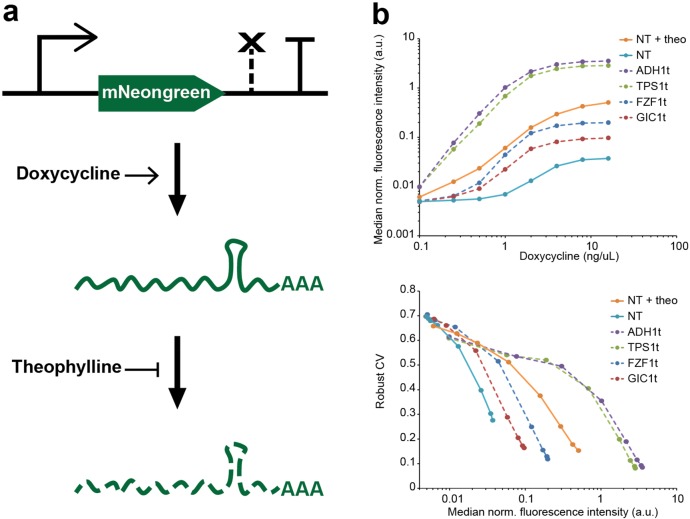Figure 1.
Design and benchmarking of a noise tuning system. (a) Schematic depiction of the noise tuner. In a Tet-ON system21 doxycycline activates transcription of the fluorescent mNeongreen reporter gene by binding to the constitutively expressed reverse tetracycline trans-activator (rtTA, not shown). Addition of theophylline prevents mRNA degradation by disrupting the ribozyme cleavage activity in the 3′-UTR. (b) Comparison of the noise tuner with constructs harboring native 3′ regulatory regions measured by flow cytometry. All constructs are identical in their Tet promoter and mNeongreen fluorescent reporter gene and differ only in their 3′ RRs that confer low (FZF1t, GIC1t) or high (TPS1t, ADH1t) expression.24 Top panel: Dose–responses with 0 to 12.8 ng/μL doxycycline. The noise-tuner transcript was either unstable (0 mM theophylline, “NT”) or fully stabilized (12.8 mM theophylline, “NT + theo”). Bottom panel: The noise tuner exhibits similar inverse noise-median correlation as native 3′ RRs. Noise is given as the robust coefficient of variation (robust CV, see Methods). Median fluorescence intensities normalized to a constitutively expressed mTurquoise2 reporter gene are given in arbitrary units (a.u.). Higher median fluorescence intensities correspond to induction with higher doxycycline concentrations.

